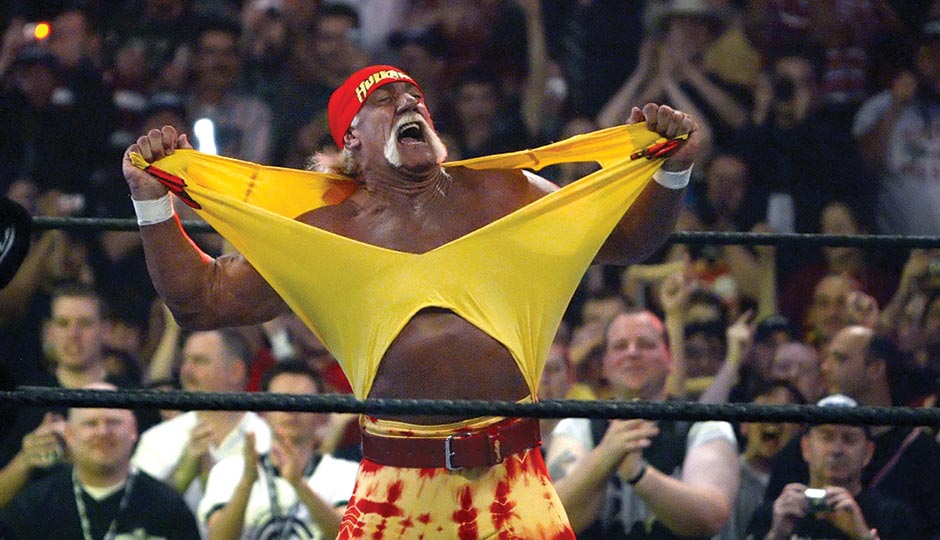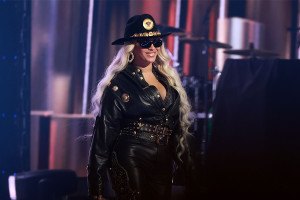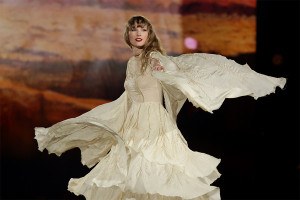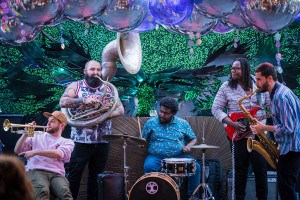On the Royal Rumble: A Defense of Professional Wrestling

Wrestling superstar Hulk Hogan tears it off. Photo by Chris Carlson/Associated Press
My Uncle Dave first introduced pro wrestling to me as this funny Saturday-morning TV show. Twenty years later, I’m a huge fan. But most people love to hate on wrestling. They think that fans — like me — are stupid, that we somehow don’t realize the whole thing is fake. Believe me, the fans are in on the con. We know the outcomes are predetermined. We’re in it solely for the entertainment.
And what entertainment there is. Soap-opera story lines are combined with incredible feats of sequined athleticism, with some pyrotechnics thrown in for good measure. “You can’t look away,” says Bryce Remsburg, a referee with Chikara, a wrestling promotion company based in Philadelphia. “It’s better than a superhero. I would rather seen Macho Man and the Ultimate Warrior than Batman and Superman.”
The fact is, professional wrestling is an art form — the most underappreciated one there is. It’s a sporting event cloaked in over-the-top theatrics. Take it from the late French philosopher Roland Barthes. “There are people who think that wrestling is an ignoble sport,” he wrote in his 1972 essay “The World of Wrestling.” “Wrestling is not a sport, it is a spectacle, and it is no more ignoble to attend a wrestled performance of suffering than a performance of the sorrows of Arnolphe or Andromaque.” Since I don’t speak French, I’ll stick with a tag-team steel cage match.
This month, World Wrestling Entertainment, Inc., the publicly traded billion-dollar company known to most as “the WWE,” holds its annual Royal Rumble at Wells Fargo Center in South Philly, watchable on pay-per-view for $44.95. The Rumble is the greatest wrestling match there is: 30 men, one entering the ring every two minutes, with opponents eliminated by tossing them over the top rope. Philadelphia is such a special place to watch live wrestling, thanks to our famously boisterous crowds.
But Philadelphia isn’t all about “big” wrestling; we have a rich history in the indie version of the sport. In the 1990s, the city was home to Extreme Championship Wrestling, an independent federation known for particularly violent bouts in a South Philadelphia hall that became known as the ECW Arena.
That league went bankrupt in 2001, but indie wrestling lives on in Philadelphia in federations like Combat Zone Wrestling (mindless, bloody violence), Ring of Honor (more of a focus on the technical aspects of combat), and Chikara (fantasy-like storytelling and silliness). “As far as indie wrestling goes, Philly is probably the most moved-to city for wrestlers,” Remsberg says.
And many indie federation guys will find themselves in the ring for the Rumble. Likely contenders include Seth Rollins (former Ring of Honor champion “Tyler Black”), Dean Ambrose (he was known as “Jon Moxley” in CZW), and Chikara’s Luke Harper, a rising star formerly called “Brodie Lee.”
“What is portrayed by wrestling is … an ideal understanding of things,” writes Barthes. “It is the euphoria of men raised for a while above the constitutive ambiguity of everyday situations and placed before the panoramic view of a univocal Nature, in which signs at last correspond to causes, without obstacle, without evasion, without contradiction.”
Well, I don’t know about all that, but what I do know is that on January 25th, you’ll find me ringside as 30 grown men grapple, kick and eye-gouge each other in pursuit of this higher form of glory. If you’re there, be sure to say hello. Just don’t get knocked in the head by a flying folding chair or spray of wrestler blood.
Originally published as “In Defense of Professional Wrestling” in the January 2015 issue of Philadelphia magazine.


